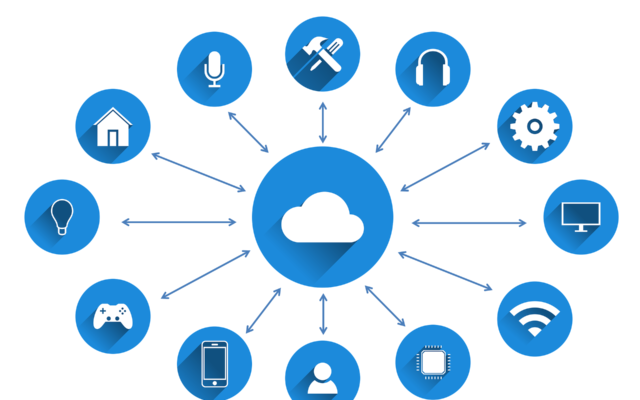From smart phones to smart refrigerators, technology now plays a really important part in our life. This rapid rise of technology has not just added feasibility to our lives, but has also transformed the world of manufacturing.
Industry 4.0 is the newest label that has been given to the eventual combination of traditional industrial and manufacturing practices with the growing technology trends around us. The amalgamation of technology with the traditional industrial trends in place for a long time can be seen through the application of large-scale IoT and M2M deployment in the manufacturing field. The modern workplace will become increasing self-monitoring and automated. The automation will be achieved through the ability of the machines to analyze different tasks and work towards detecting anomalies. This would make way for a much smoother flow of processes within an organization.
I recently had a chance to talk to Industrial IoT anomaly detection domain expert Ruban Phukan, Vice President of Product Progress DataRPM as part of the Progress Ambassador program and discussed the current developments in the Industrial IoT market.
Challenges in IIoT
The process of anomaly detection within the Industrial IoT or IIoT is still at a very nascent stage. Since it is still at a growth stage, the stakeholders behind the IIoT have to go through numerous implications. These complications involve the following challenges:
- It takes a substantial amount of time for IIoT businesses to find proper results from their data. The lag time from when the data is generated to when the solutions are implemented is too long, and by that time, one cannot gather insight from that data.
- Factory and production requirements and environments are rapidly and constantly changing. This constant change hallmarks the recent rise of technology, but it also creates difficulties for IIoT firms to keep up. So, by the time a solution is implemented, it proves to be outdated.
- Without the basic capability to implement changes on the go, IIoT businesses will keep struggling in implementing solutions.
Cognitive Anomaly Detection
Now, as part of these complications, IIoT businesses are undergoing a major digital transformation. This proposed change will give them the ability to implement digital capabilities that will properly handle data from sensors. Anomaly detection is, currently, a major problem for businesses operating in the IIoT sector. The current technologies in place for detecting anomalies are not equipped with understanding data from sensors, which is why they’re unable to make head or tails out of it.
It has been estimated that 43 percent of all unplanned downtime in businesses occurs because of equipment and asset failure. This unplanned downtime, coupled with the 50 percent more repair costs applied to fix failed assets that weren’t identified for problems in time, leads to major problems for all organizations. This problem can, however, be solved through the means of cognitive anomaly detection. Cognitive ability detection gives IIoT businesses a great opportunity to detect all problems in manufacturing before they actually occur. This not only saves a lot of costs, but also saves the business from downtime that halts manufacturing. If IIoT businesses learn to properly use anomaly detection methods within their system, they will greatly benefit from reduced costs and reduced downtime in manufacturing.
The movement towards cognitive anomaly detection has gained pace in the IIoT market, and a concrete pathway has been created for the implementation of this method. Besides the role of the R&D department, something which we will talk about in detail later in this article, the following headways have been made:
- IIoT businesses have realized the importance of applying intelligent capabilities such as Predictive Analytics and Machine Learning for detecting the unknown. These businesses also do realize that the implementation of sensors will create a huge data inflow, which needs to be carefully catered to.
- IIoT companies now realize the importance of making investments in real-time anomaly detection tools, which bring accurate results regarding asset failure.
- There is also a need for IIoT businesses to use all the data that is being generated through sensors and to create proper results based on that interpretation.
Role of R&D Departments
The research and development (R&D) departments within all IIoT businesses sit at the forefront of the change towards better anomaly detection. This latest wave of IIoT manufacturing failures has meant that these businesses now need better anomaly detection that inculcates a sustainable method for detecting failure before it occurs. The need for a sustainable method for detecting and preventing the breaking down of machine parts is felt to limit the downtime that is experienced because of unplanned failures, and the extra costs that are incurred because of these anomalies.
In order to limit the chances of unplanned failures, IIoT businesses want their research and development departments to speed up the work and predict future failures. 80 percent of all the failures that happen in IIoT are caused because of things that didn’t happen in the past. So, most machines may find it hard to predict problems that they themselves have never experienced in the past. Without the presence of pre-existing conditions for alerting them about presence of anomalies, machines will be of no use.
What the research and development department within an organization needs to do here is to test new things or new unknown problems happening around us. Research and development teams need to test the effectiveness of cognitive anomaly detection and prediction through a scalable manner. This will require the collection of data regarding possible failures, and feeding that to the machines. By testing all possible anomalies of the future, the research and development department can make the anomaly detection system well equipped with fixing problems before they occur.
By the implementation of the method we mentioned above, a business may be able to save downtime and increased costs by getting a machine part replaced before it breaks down.
Some of the important technologies that are developing the industry in anomaly detection include:
- Businesses have an active eye on sensors, and there is an active alert when something goes haywire. Data scientists have trained prediction models on previous failures, so that they generate a signal when the failure is repeated.
- Besides focusing on prior knowledge, machines are now also trained to look at the data first, before finding the anomaly. If a machine has 100 different anomalies fed into it, how would it recognize the kind of anomaly occurring at a point of time? So, instead of the machine immediately looking at prior data, it now studies the data first before making comparisons.
Common Questions Being Asked by Businesses
Cognitive anomaly detection is a new concept, and businesses have many questions related to the concept.
An important question that most businesses need an answer to is what they should do if they have a big team of data scientists already in place. The answer to this is that there is no reason to fret here, and the implementation of cognitive anomaly detection will just free your data scientists from doing mundane tasks such as regularly tuning models. They could now be more productive in a way.
You can subscribe to the webinar on cognitive anomaly detection by clicking here.
Article by channel:
Everything you need to know about Digital Transformation
The best articles, news and events direct to your inbox
Read more articles tagged: Featured, Fourth Industrial Revolution








